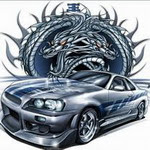

Mercedes-Benz B-Class: Sports Tourer in better shape than ever
After three successful years, Mercedes-Benz has overhauled the design and engineering of the B-Class. The facelift programme focused on environmental compatibility, economic efficiency and comfort, with further advances being made in each of these areas. Thanks to a series of detailed improvements, the four-cylinder engines now burn up to seven percent less fuel than previously, and distinguish themselves with remarkably low exhaust emissions that undercut the current EU limits by as much as 90 percent. Mercedes-Benz has developed a new ECO start/stop function for the high-volume B 150 and B 170 models. This switches off the engine when stopped at traffic lights, for example, producing a fuel saving of up to nine percent in practical use. Additional new developments include the bi-fuel petrol/natural-gas drive in the B 170 NGT BlueEFFICIENCY, along with active parking assist which helps drivers to both find a suitable parking spot, and then manoeuvre into it.
Since its market premiere in summer 2005, the B-Class has evolved into the blueprint for a new species of car which harmonises the benefits of various vehicle concepts: the four-door model boasts the dynamic design of a sporty saloon, the exterior dimensions of a compact car, the spaciousness of an estate, the versatility of a mini MPV and, of course, the trademark safety of a Mercedes-Benz.
The sales figures for the B-Class to date provide clear evidence that the Mercedes-Benz product planners hit the mark with a concept that caters to the motoring needs of today's sophisticated society: since mid-2005, over 325,000 motorists around the world have been won over by the Sports Tourer.
The restyled front end injects the B-Class with even more poise and assurance than before. This is primarily down to the radiator grille with its three chromed cross fins painted in metallic grey and the Mercedes star integrated into its centre. However, the more imposing appearance of the B-Class also stems from the new-look bumper – whose design emphasises the large air intake at the bottom – as well as the modified bonnet.
Design: restyled front end creates a powerful presence
This new design idiom makes the front look broad and, as a consequence, especially powerful, symbolising the sporty attributes of the B-Class even more clearly than before. Aside from power and performance potential, these qualities include the car's agility and its forwards thrust, something which is further underlined by the more pronounced arrow shape of the bonnet, radiator grille and bumper. This has the effect of making the entire front section appear to be surging dynamically forwards – a highly expressive styling element of the current Mercedes design idiom, which can be appreciated better than ever before in the 2008 model year version of the B-Class. The front end's arrow shape is continued rearwards in the form of an understated but effective line running up the centre of the bonnet.
Typical distinguishing features of the current Mercedes style are also very much in evidence in the side profile of the B-Class, which presents a thrilling interplay between taut forms and crisp lines. Of particular note is the character line, which rises progressively from the front wing to the rear tail light, thereby marking an intriguing divide between the concave and convex-formed surfaces along the body's flanks. This line furthermore underscores the body's wedge-shaped form, and thereby gives added impact to the Sports Tourer's athletic, powerful nature.
In the 2008 model year B-Class, the design at the sides seems even more harmonious and elegant than before because the exterior mirror housings, door handles and skirt panels are now painted to match the body colour on all model variants. The restyled hubcaps and light-alloy wheels add further touches of class to the exterior looks.
The rear styling picks up on the dynamic flow of lines at the front and along the sides. A direct visual link is created by the tail light assemblies, whose upper edges merge seamlessly with the character line along the vehicle's sides. The tail lights sport a new high-brilliance look and draw the gaze to the large tailgate, which now comes with en ergonomically enhanced chrome handle strip. The rear bumper has been remodelled too, and includes a black-grained plastic insert on its upper face as standard which serves as a load sill guard. If the B-Class is specified with either the chrome or the sports package, this insert is made of polished stainless steel instead to add yet another gleaming highlight to the tail's design.
Interior: high-grade appointments with new upholsteries and trims
High-class appeal, attention to detail and a sense of ample spaciousness – these qualities have always been intrinsic to the B-Class. The winning blend of forms, colours and materials teams up with the interior's roominess, the pleasant feel of all its surface materials and the expansive window areas to produce a most inviting ambience. This is helped by the high seating position – which, incidentally, improves the driver's view of the vehicle too – while the relatively high waistline fosters a sense of security without making the occupants feel confined in any way.
The Mercedes design team has further upgraded the interior with a new upholstery fabric, plus a new fabric pattern for the seat cushions. If the B-Class is ordered with the sports package, the side seat bolsters are trimmed in ARTICO man-made leather and the centre panels in fabric. The interior door linings likewise feature a new fabric trim.
The centre console continues to be bordered by trim strips on both sides, but they are now made from diagonally brushed aluminium in a smoke grey finish. The same, meticulously integrated trim is found again in the vicinity of the gearshift and in the door panelling, giving the interior an added sense of refinement. Such fine touches demonstrate just how much attention to detail has been invested in even the basic version of the B-Class, as well as the high standards to which it has been specified.
Diesel engines: fuel consumption reduced by a further seven percent
The B-Class continues to be available with a choice of six engines – two direct-injection diesel units (80 kW/109 hp and 103 kW/140 hp) delivering up to 300 Newton metres of torque, as well as four petrol engines with a peak power output of up to 142 kW/193 hp and a maximum torque of 280 Newton metres. The four-cylinder power units have undergone a series of detailed improvements in order to further reduce fuel consumption.
For the diesel models, this means that the combined NEDC fuel consumption
of the B 180 CDI and B 200 CDI has dropped by as much as seven percent – depending on tyre size – to 5.2 - 5.4 and 5.4 - 5.6 litres per 100 kilometres, respectively. The two turbodiesel models will therefore be an even less seldom sight at the filling station from now on; the B 180 CDI can clock up over 1000 kilometres on a single tank of fuel (54 litres).
Petrol models: new fuel-saving ECO start/stop function
Depending on the model and engine output, the four petrol variants of the B Class return fuel consumption figures of between 6.6 and 8.1 litres per 100 kilometres on the NEDC driving cycle. From autumn 2008, motoring is set to become even more economical with the arrival of the B 150 and B 170 BlueEFFICIENCY models featuring the ECO start/stop function (optional). This newly developed function automatically switches the engine off when the driver shifts to neutral at low speed whilst depressing the brake pedal. If the criteria for stopping the engine are fulfilled, a special display appears in the instrument cluster to inform the driver.
The moment the clutch is pressed or the brake pedal released, the engine springs back to life almost noiselessly and in a fraction of a second. This ability to restart the engine swiftly yet smoothly gives the ECO start/stop function a key edge over other systems of this type. To achieve this, Mercedes-Benz fits a starter-generator which is connected to the crankshaft via the belt drive. This allows the engine to start much faster and far more quietly than with the conventional starter. During the journey, the starter-generator feeds the electrical system on board the B-Class with energy.
In practical operation, substantial fuel savings of up to nine percent can be achieved with the ECO start/stop function, particularly when driving in city traffic with frequent stops at traffic lights or in tailbacks.
Natural-gas drive: a clean and economical alternative
A further new addition to the B-Class range bears the initials "NGT" on the right-hand side of its tailgate. They stand for "Natural Gas Technology" and identify a model variant which is as economical as it is environmentally compatible, courtesy of its bi-fuel drive: the B 170 NGT BlueEFFICIENCY is able to run on both natural gas and premium grade petrol while delivering an identical maximum output of 85 kW/116 hp.
In addition to the petrol tank, there are five natural gas reservoirs whose total capacity of 16 kilograms equates to a range of over 300 kilometres. With overall NEDC consumption figures of 7.3 litres of premium petrol and 4.9 kilograms of natural gas per 100 kilometres, the new B 170 NGT BlueEFFICIENCY is therefore able to attain a total range in excess of 1000 kilometres. The driver determines which power source the engine is run on at the touch of a button using the multifunction steering wheel; an electronic control unit carries out the switch instantaneously without any jolts – even while on the move.
The four-cylinder engine has been modified by Mercedes-Benz to include additional gas injectors on the underside of the intake manifold. A close-coupled pressure governor with electromagnetic shut-off valve regulates the supply of natural gas and keeps the pressure within the system constant.
The installation of the gas reservoirs, which are located in the rear and underneath the front passenger footwell, reduces the boot capacity of the B Class by 128 to 422 litres (as per the VDA measurement method), but there is still sufficient space for carrying a family's luggage.
The lower carbon dioxide emissions and cheaper fuel costs make natural gas an attractive alternative to petrol and diesel, both ecologically and economically speaking. On the NEDC cycle, the CO2 emissions are 17 percent lower than in the petrol-powered B 170 at 135 grams per kilometre. If the 4.9 kilograms (7.5 m³) of natural gas consumed per 100 kilometres by the new B 170 NGT BlueEFFICIENCY is converted into the equivalent quantity of petrol energy, the fuel cost per kilometre is around 50 percent less than when running on petrol.








No comments:
Post a Comment